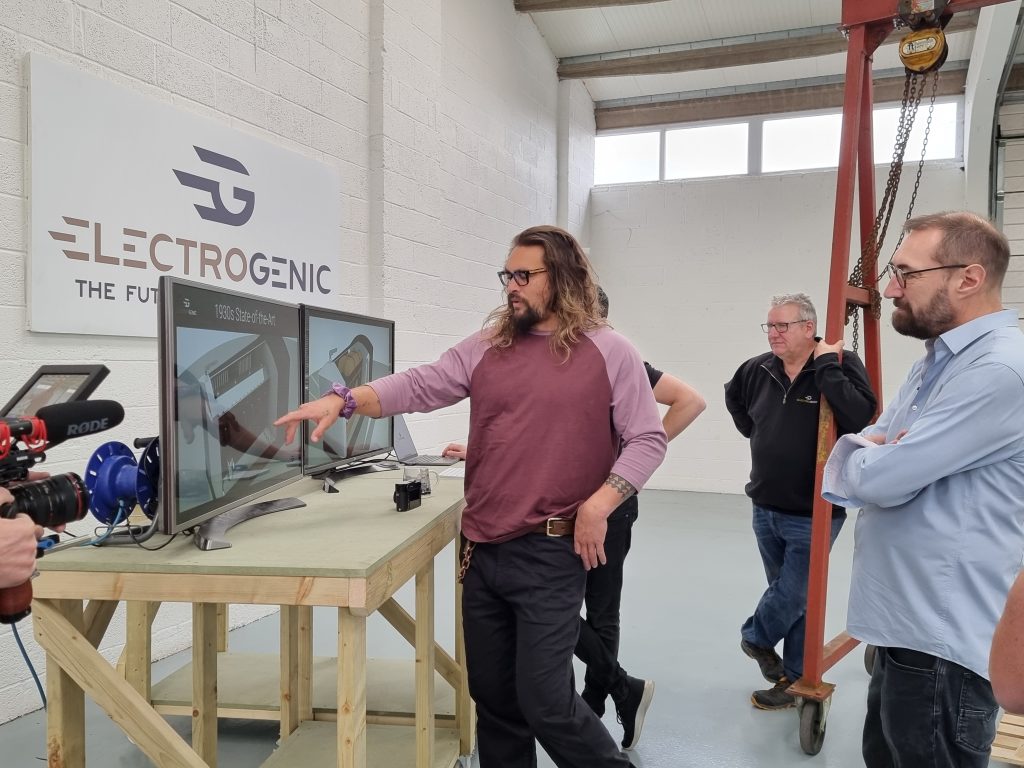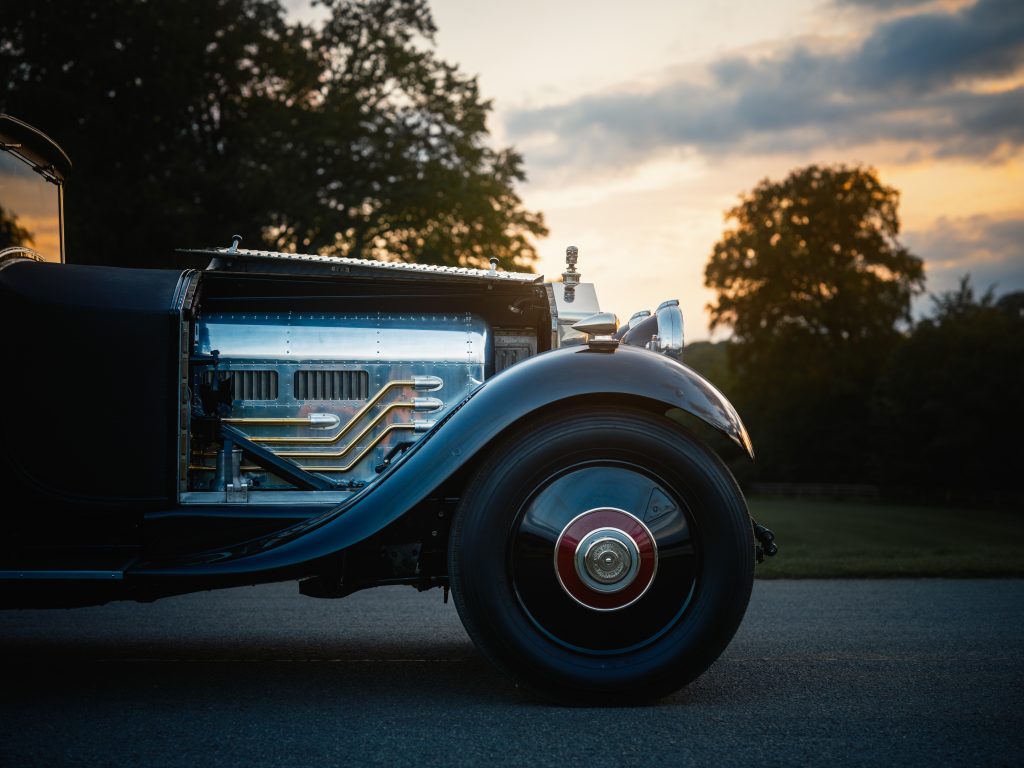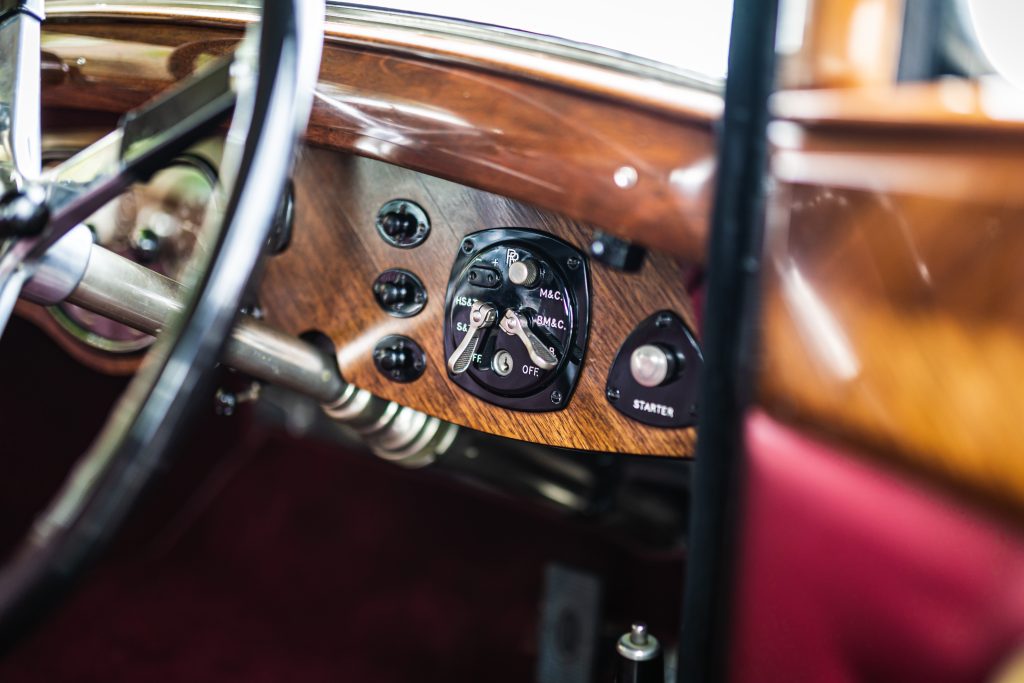When Hollywood actor Jason Momoa decided to convert his 1929 Rolls-Royce Phantom II to electric power he turned to British specialists Electrogenic.
The car, which features in Momoa’s documentary show On The Roam, took more than 18 months to build in Electrogenic’s Oxfordshire workshop.

Electrogenic boss Steve Drummond believes electrifying the Phantom was “probably the most complicated project (of its type) anybody in the world has ever done.”

Momoa was actively involved from the outset, defining the car’s specification based on how he planned to use it. “Jason is particularly visual,” explains Drummond. “So he was very interested in the visuals under the bonnet, in particular, and also in keeping the car original externally and in the cabin.”
“We couldn’t just fill the space under the bonnet with batteries, because the engine is quite narrow in the bay. So we designed the batteries to maintain that sort of feel. Then in terms of the visuals, we had a talk with him, we came up with some visualisations and some 3D renders designs and renders. He chose what he preferred and then tweaked it a little bit and so he was he was very much involved.”

The ornate aluminium housing was hand-formed and riveted to become sculptural element of the vehicle to proudly display, unlike most EV conversions with their bland battery boxes.
However, it was the engineering rather than the aesthetics which was hardest to pull off. Removing the Phantom’s 7.7-litre pushrod straight-six engine and transmission had a knock-on effect with the car’s ingenious “through-flow” chassis lubrication system and its brakes.
“The lubrication system and the brakes that were perhaps the biggest challenge, because once you’ve done away with the engine, you lose the drive for those features,” explains Drummond. “The way it works is it has a lot of push rods and pivot points that deal with all sorts of things including the brakes. And they are lubricated by a central system which simply sends oil down a series of pipes to the various bushes. By removing the gearbox we had to modify that system. The braking system was complex for two reasons. One is the brakes themselves, as they’re cable operated through a series of pivots and levers which sit between the chassis rails in just the area where we wanted to put batteries. So we removed them and then fixed them elsewhere in the car which means we have all the same linkages with same ratios and so on, but just relocated.”
The next trick was how to make the setup work in conjunction with regenerative braking which is vital to providing the Phantom’s 150-mile range. Electrogenic designed a new brake pedal with a hydraulic booster connected to the cable while the regenerative braking on the rear motor helps maintain the car’s original 40:60 front-to-rear brake bias.
The drivetrain and its control systems are similar to Electrogenic’s Land Rover Defender kits, albeit with a whopping 93 kWh of batteries installed. As you can imagine these cells aren’t exactly light, but the original engine weighed around 750 kg so the conversion is almost weight neutral. “It’s plus or minus a few kilograms – it’s almost nothing,” says Drummond.


Inside, the elegance of the Phantom has been maintained, but the original clocks serve new functions. The amp meter is now a power meter and the oil temperature and water temperature gauges no show charger and motor temperatures, while the vertical sight glass which showed the fuel level as been swapped for an LED unit. Momoa also requested a high-end hifi, which is discretely hidden from view.
“The challenge with the Rolls Royce was how to fit all this into such an amazing car without changing its character and in a sympathetic way.”
It appears to be a job well done, with Momoa a very happy customer. “In order to pull off this dream project, I had to find the right partner,” he says. “I needed a team that would appreciate the storied history of this car while updating its technology. Electrogenic is all about honouring vintage cars. Making them electric without losing any of the vehicle’s character. They were the perfect fit.”











